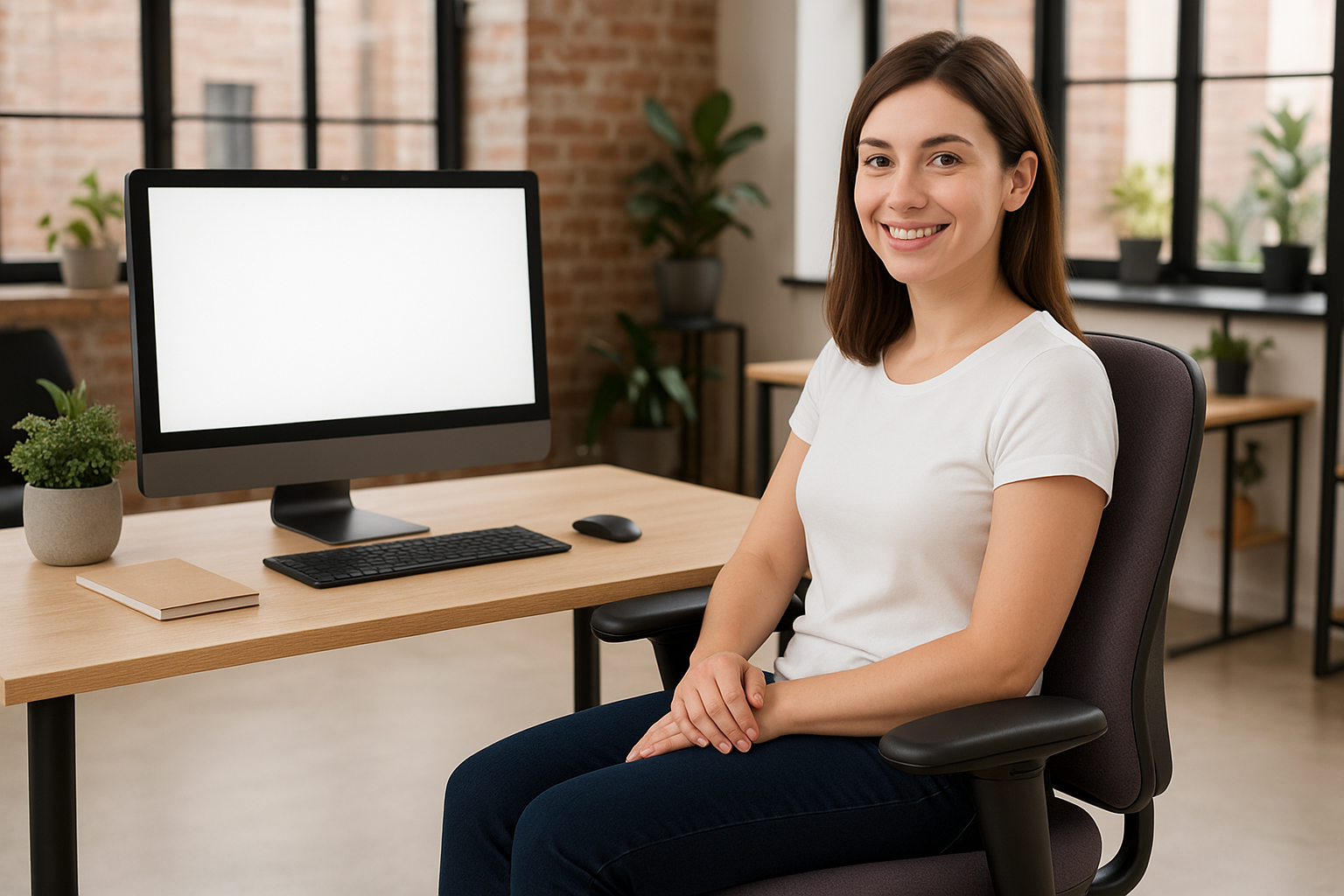Blog
How to adjust your chair to support your lumbar spine

Working at a desk and sitting with poor posture frequently leads to back pain. That’s where the right ergonomic office or desk chair can help. Your desk chair needs to be adjusted correctly, to support your lumbar spine. At Abbotts Office Furniture we frequently get enquiries about adjusting new chairs, so today we’re helping with simple instructions.
How to support you back
The lumbar spine is the lower part of you back, below your middle back or thoracic spine. It’s one of the main areas of your spine that is effected when you spend a lot of time sitting. The lumbar includes the verterbrae, the disks, muscles, ligaments and blood vessels.
To get the right support you need an ergonomic office chair that supports your lower back. You also need to move regularly throughout the day.
The shape of your back has a natural S curve and the objective when you are sitting is to maintain this natural curve. When you are sitting with the right back support, your hips, ears and shoulders should all be in line.
Because everybody is a different size, the best type of chair will give you the ability to adjust your lumbar support, the backrest and move the chair up and down to get the setup right.
Once you get your chair, you’ll need to make some adjustments.
How to adjust your office chair
Here’s a quick guide to adjusting your ergonomic chair:
1.Adjust the height of your chair
Move the chair up or down to get the right height. Your chair needs to be at a height where you elbows are comfortably at a 90 degree angle and your hands rest comfortably on your keyboard. Your feet should be flat on the floor and your knees also at a 90 degree angle. If your feet do not touch the ground, you may need a footrest or alternatively adjust the height of your desk.
2. Adjust the lumbar support
If your chair has adjustable lumbar support, adjust it so that the back rest fits comfortably into the curve of your back. If the lumbar support is too low, you will end up slouching. If the lumbar support is too high, you will end up arching your back.
3. Adjust the headrest
If your chair has an adjustable headrest, this can help prevent head and neck strain.
4. Adjust the arm rests
If your chair has arm rests, adjust them so your arms and shoulders are relaxed. The arm rest height need to be exactly where your arms are positioned naturally.
It’s not just about adjusting your office chair.
Even when you’ve adjusted your office chair to support your back, it’s important to move and not stay seated in the same position for long periods. We’re designed to be moving. Avoiding injury at work requires us to move regularly across a range of natural motions. That means taking breaks frequently, walking around and doing things that keep your back and core strong and flexible.
While a good seating position and posture is important, it is also important to be relaxed while you are at your desk, and that means being able to shift and adjust your position to remain comfortable. A good office chair will be strong, able to withstand regular shifts in body position, and will move with your body, allowing swivelling and back and forth movement.
Advice
If you need assistance with a new office chair that suits your requirements, we can help. We are one of a very few office furniture stores in Melbourne where customers can purchase online and visit our showroom to see our range. We provide lots of friendly advice to help choose the chair, and we offer delivery.
You can browse and purchase from our online showroom. If you have any questions, call us on 1300 917 260